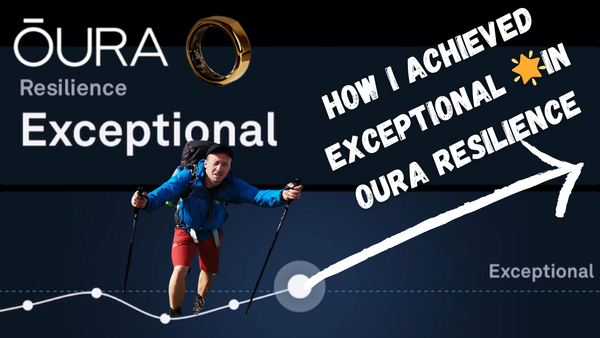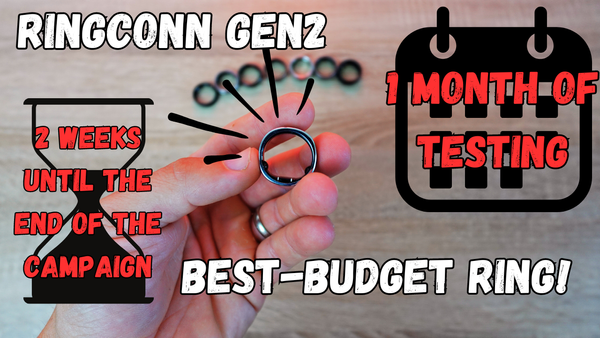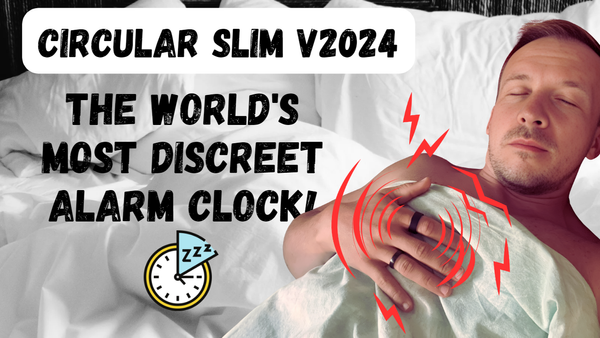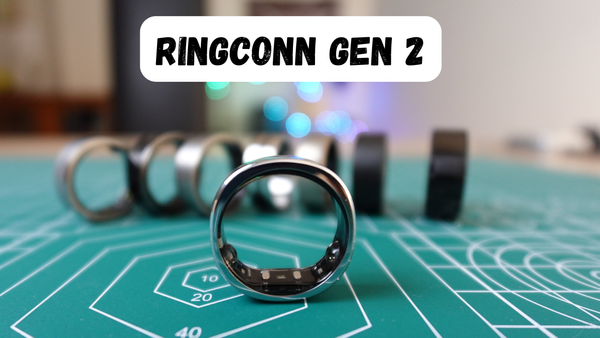My year with Ultrahuman AIR + 🎁Anniversary campaign
For one year, I wore the Ultrahuman AIR. What is the experience like? And what extra benefits can you get in the Ultrahuman anniversary promotion?
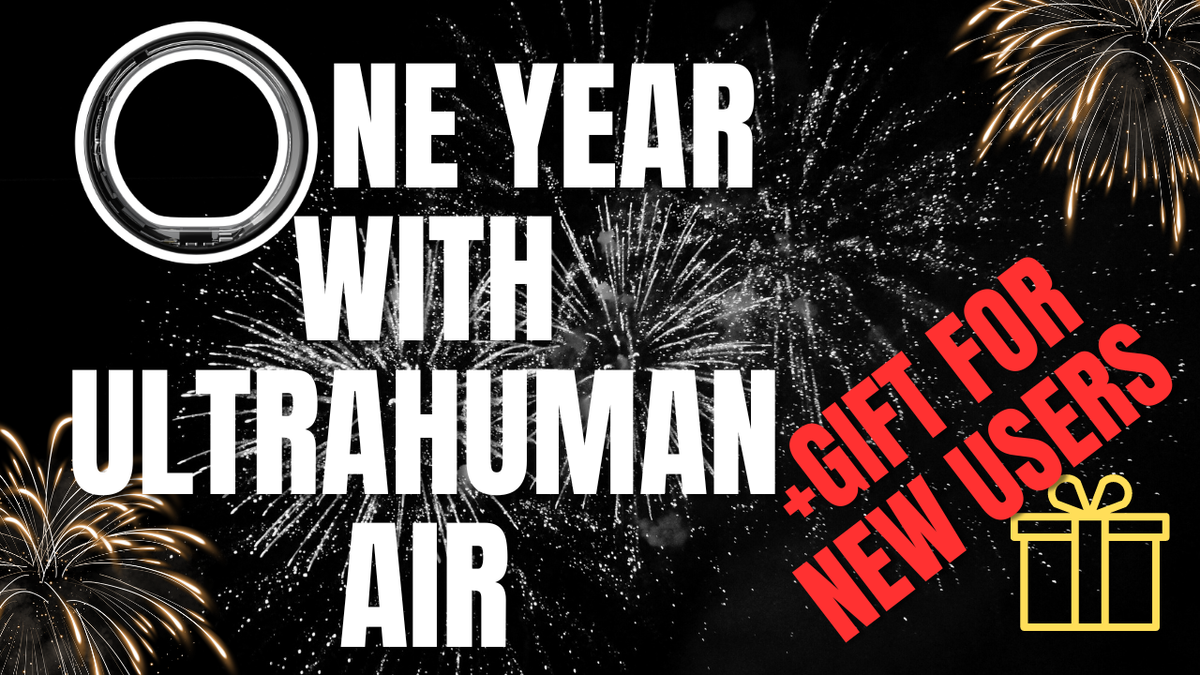
On June 26, 2024, I celebrated a year with the Ultrahuman AIR. Since this marks the first anniversary of not only my use but also the ring's existence, Ultrahuman has prepared a special promotion, which I will detail at the end of this article.
For those who are impatient, you can click on the relevant section in the article's table of contents below ;-)
Clickable article content ⤵️
In this article, I want to highlight my experiences from a year of using the Ultrahuman AIR and also what has changed since my review in August 2023 (and there is a lot).
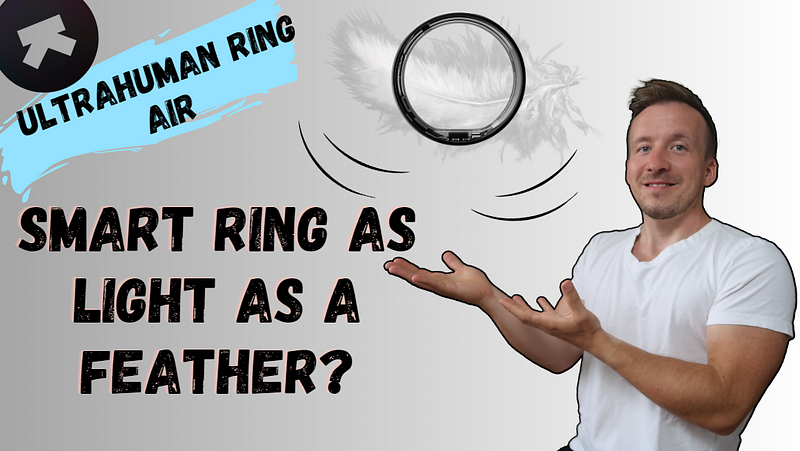
Alongside the Ultrahuman AIR, I also simultaneously use the third generation Oura Ring, so there might be some comparisons.
⚙️ HW - The ring after one year of use
The hardware, primarily the ring itself, remains the same. I haven't had any complaints or significant problems requiring replacement (and from the community's experience, there's no problem with warranty and ring replacement).
I almost always take the ring off for physical work and lifting weights, but of course some wear and tear has occurred. I have the matte version, which is more prone to scratches, but I don't mind. The ring gets a nice patina:

The shinier versions less prone to scratching. Throughout the year, Ultrahuman has been expanding its range of colours. The latest addition is Raw Titanium, which is no more durable than its name suggests.

🔋 Battery
Battery life is generally still a hard-to-predict matter, as smart rings are relatively new in the long term. However, I can say that my experience is that the ring lasts for 3 full days after a year of use. I discussed this in a recent article:
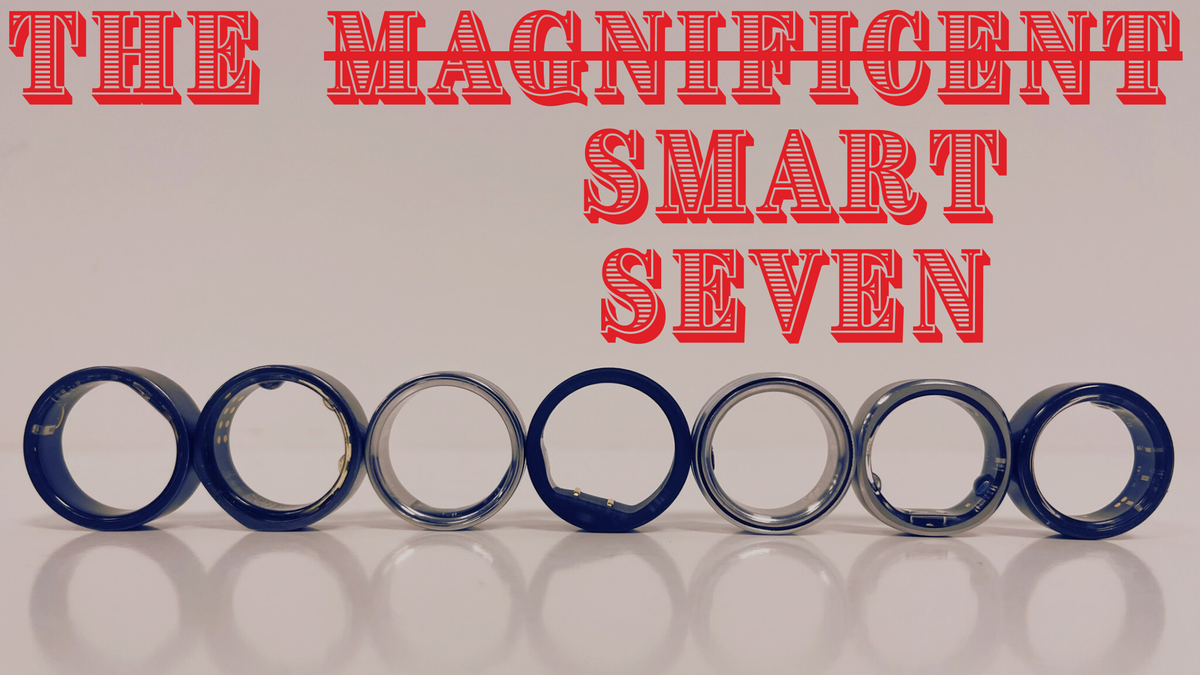
One of the weaknesses of the UH Air is its charging speed; charging from "zero to full" can take 2-3 hours. Therefore, I recommend charging it a little bit every day. This is also gentler on the battery.
Weight & Dimensions
Although there is a lot happening in the smart ring market, the Air is still the lightest (2.85 g) and thinnest – in terms of overall circumference. At its thinnest point, the Air surpasses the Circular SLIM.
I think Ultrahuman Air scores points with the general public precisely because of its (small) thickness, as it does not appear as bulky as the competition.
If I were to criticize the ring, it would be the lack of an indicator for the correct ring position (sensors on the inner side of the finger). From time to time, I have to remove the ring to ensure it is positioned correctly.
📱 Software
Over the past year, Ultrahuman has been my most updated app. I think a new version lands almost every week. This could mean two things: they are developing a lot, but maybe also fixing a lot of bugs. Either way, they are working hard on it.
A slight disadvantage is that each update requires downloading about 500 MB of data.
CURRENTLY REFERRING TO:
- App version: 2.40.3
- Firmware version: 02.00.05.73
There have been many changes over the past year. I'll summarize only the most interesting ones for me.
🧨 Dynamic Recovery Score
While a year ago I mentioned that Ultrahuman's Recovery was analogous to Oura's Readiness, this is no longer the case. UH has changed the concept. Now, it views this metric dynamically. This means that although you receive a "report card" in the morning, it is not final/static and can change throughout the day – especially based on stress assessments.
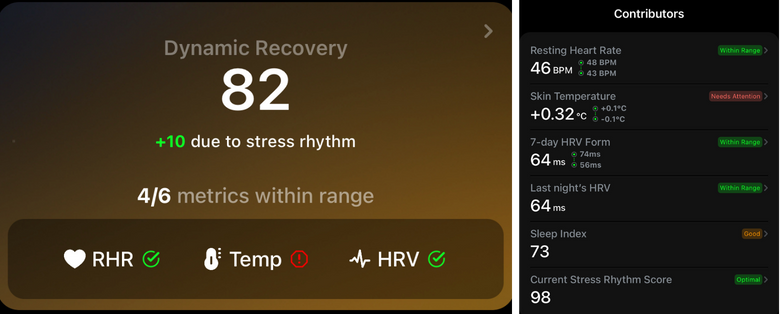
The dynamic score consists of 6 contributors:
- Resting Heart Rate – the lowest resting heart rate of the last night,
- Temperature 7-day,
- HRV trend,
- last HRV,
- Sleep Index,
- and Stress Score.
The first 3 metrics are central. UH approaches these contributors with some tolerance, i.e., whether they are within your optimal range.
Unfortunately, I currently miss a verbal summary within the Recovery, recommendations for the day. I reported this feedback to UH, so we’ll see if something comes in the next updates.
I mentioned the Stress Score, which is another new feature...
😓 Stress
While I praised the stress interpretation by the Oura ring, Ultrahuman has come up with its own solution. I appreciate that it's not a copy-paste but rather approaches the issue with its own know-how and concept. Specifically, it places stress measurement in the context of the circadian rhythm (it does the same with stimulants, for example).
This means that, for instance, stress during the day is "more manageable" than stress in the evening before bed. Below is a comparison of the same day by Oura and UH:

I like that UH clearly shows activity in the curve (while Oura omits activity time from the curve).
And of course, it’s also about the dynamic score, so you see the current value throughout the day, and UH doesn't forget to mention that stress can be beneficial - for example, for productivity:

And stress is something that can be worked on - which leads on to the next new feature - breathing and meditation exercises.
🧘♂️ Breathing Exercises
The range of exercises within "Breathwork" is very rich. There are essentially two types - NSDR (Non-Sleep Deep Rest) and specific breathing exercises, including box breathing, Wim Hof method, etc.

Here, UH has made progress because the exercises are "connected" to the ring, so you get some measurement data.
Personally, I would expect NSDR (yoga nidra) to include voice-guided exercises. However, this is not the case. Still, these breathing exercises are more of a premium feature, meaning you would probably pay for a subscription in other specialized apps.
❤️ VO2MAX & Cardiovascular Age
I don't know if it was a coincidence or not, but UH and Oura released these metrics at almost the same time.
Ultrahuman assigns me a higher VO2Max than Oura and Garmin (which is considered quite accurate). Conversely, my cardiovascular age is higher than Oura estimates. I take these metrics with a grain of salt and see them more as a high-level view and a potential trend indicator.
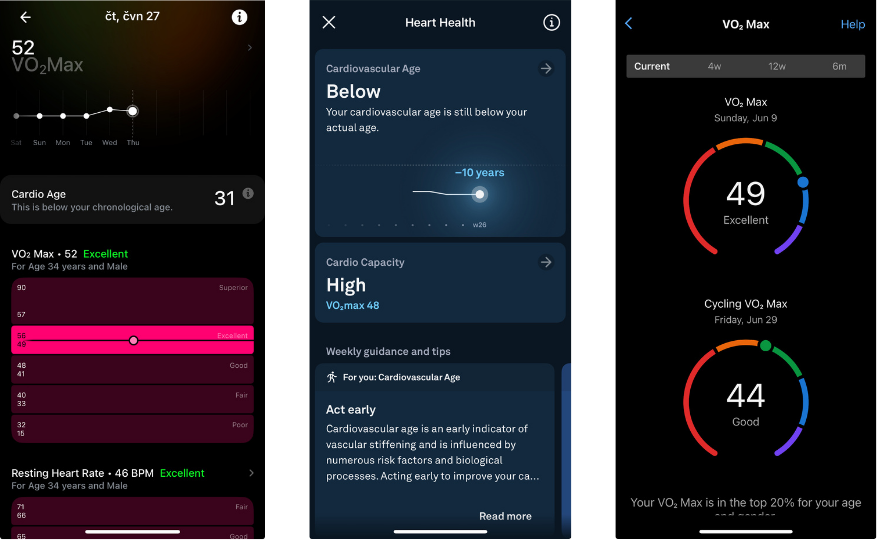
🎯 Smart Goals
Smart Goals are an older feature, and although I don't use them actively, I think they are worth mentioning. It's a kind of smart "habit tracker," unique in the field of smart rings.
The concept is that you can set up to 8 different goals – for example, step count, bedtime, wake-up time, 20 minutes of workout, etc. And the great functionality is that the ring monitors the achievement of the goal by itself.

One disadvantage I see is that there is currently no historical report showing how well you have achieved your goals in the past.
🌗 Shift Work
I am not a shift worker, but I believe many of us are. Ultrahuman Air is the only ring that offers this functionality (RingConn somewhat addresses this with its Bedtime Schedule setting).
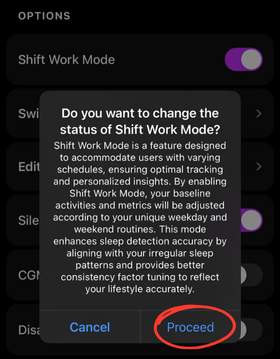
It can be activated in the settings, and the algorithm is supposed to be more adaptable to the shift work rhythm. If anyone has tested this, please let me know! 😄
📊 Vision Board
The Vision Board is a futuristic-looking interactive web report over your data.

Conceptually, it is similar to what Oura offers within Oura Cloud, providing daily views and trends.

📍 Localization and 🛬 Airplane Mode
I have walked around the garden or house a few times using an app (BLE scanner or Wunderfind) to find a smart ring. Ultrahuman now includes a Bluetooth search function within the Ultrahuman app itself.
While Oura shows the last known location based on GPS (mobile), UH searches based on Bluetooth signal strength. As a result, you need to be quite close to the ring for it to be located...

🌐 Ecosystem
I have mentioned this in the article below and I will mention it again.
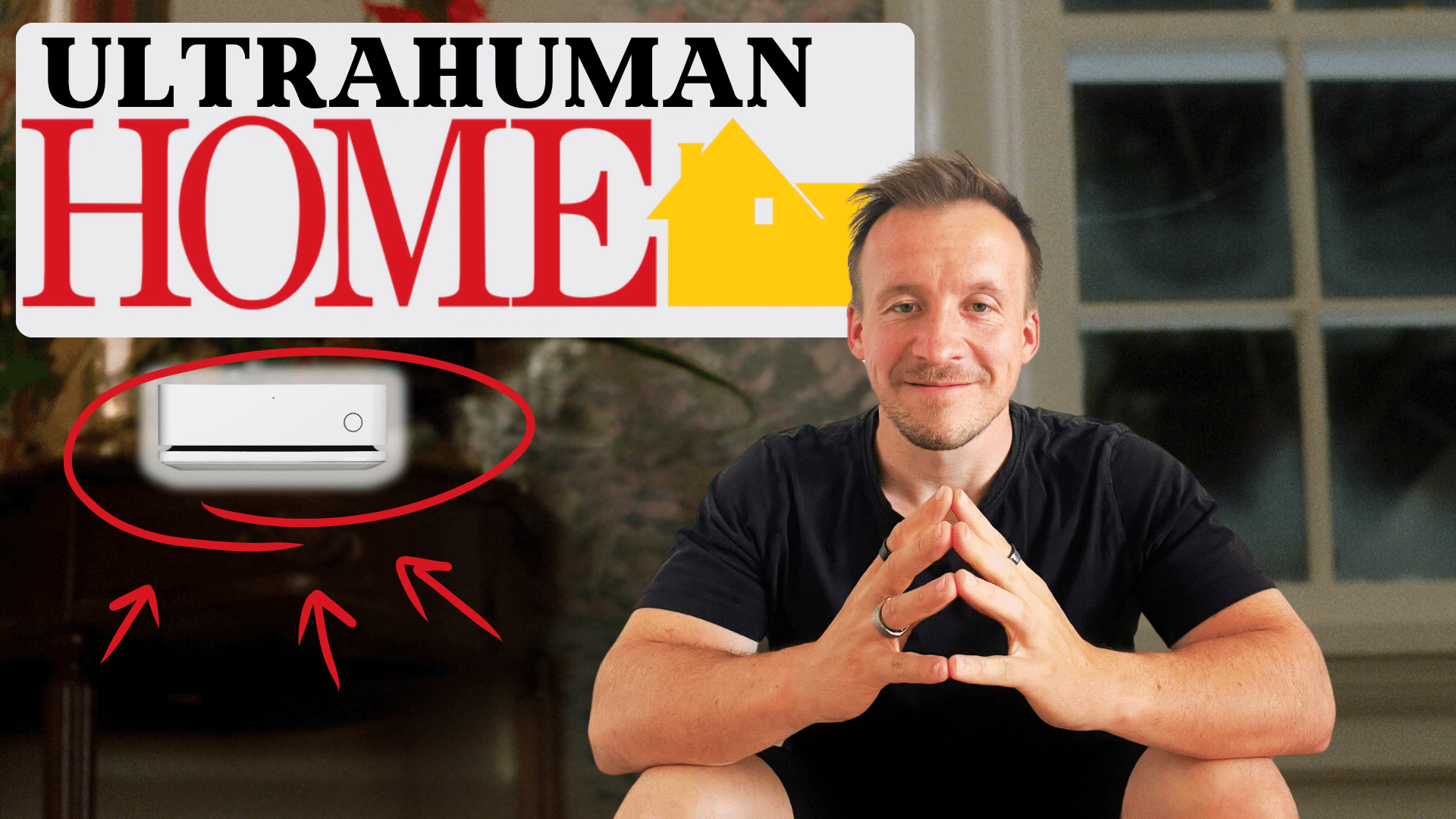
Ultrahuman ≠ smart ring. Ultrahuman = platform, which includes the smart ring, CGM data, blood tests, and (soon) the smart UH Air box.
I have already used CGM within the Ultrahuman platform for 2 periods, and I currently have an article in progress on this topic.
📏 Measurement Quality
For a long time, I was very nervous about the quality of HR measurements. It was difficult for me to validate the quality because UH uses a different calculation methodology for Sleep HR.
Therefore, I validated the measurement quality mainly during workouts - and for a long time, the curve was completely off.
But, even though the Workout mode is still in beta, during my last test of seven smart rings, a light finally appeared at the end of the ultra-tunnel, and Ultrahuman Air effectively came out as the winner.
Where I still see room for improvement is sleep tracking. Most nights, it reliably recognizes sleep. But there are nights when it gets it wrong. This especially happens when my sleep is subjectively not as good, for example, during warmer nights. It also often happens that part of the night is classified as a nap instead of part of the overall night's sleep.
🎁 Ultrahuman Anniversary Promotion
Ultrahuman contacted me with the following offer for my audience:
The first 10 people who order the Ultrahuman Air smart ring 💍 officially (no Alza/Amazon/😆) through my link between July 1-31, 2024, will receive:
- 10% discount (this is typically tied to my link even outside the first ten people and the July period),
- A free gift of The Ultrahuman Blackout Eye Mask (usually $39),
- 6 months of free Ultrahuman X subscription – all functionalities linked to the ring are, of course, free forever. This is an additional subscription offering features like priority support, better warranty for ring damage, better prices on supplements, etc.
💭 In Conclusion
When someone asks me why a smart ring instead of a smartwatch, I say it's a conceptually different device. I generally consider smartwatches an extension of the mobile phone.
A smart ring is a non-invasive silent data collector. And Ultrahuman Air is the most non-invasive due to its compactness. Thanks to its low thickness, simply put, its minimal obtrusiveness, Ultrahuman is a good companion throughout the day and night. You can comfortably exercise, swim, run, and sleep without limitations. I still prefer to take it off in the gym.
On one hand, I am glad that UH is pushing development and constantly adding new features, but on the other hand, I look forward to the app stabilizing and no longer undergoing major changes, metric reshuffles, or logic recalculations.
I can imagine that for some users, especially perhaps older generations, the app can be quite wild. A lot of data, a lot of terms, a lot of detail. In contrast, Oura is more conservative and stable.
Now, I will highlight the biggest advantages and disadvantages after a year of use, what I enjoy the most, and what irritates me the most.
| ✅ PROS | ❌ CONS |
|---|---|
| Great size and weight | Rapid development |
| Ring as part of an ecosystem (CGM, future UH Home, blood tests) | Different approach to measuring some metrics (e.g., night HRV) |
| Excellent customer support - the best among smart rings | Weaker disease detection |
| Same price for all color variants and no subscription | Slow charging and constantly lit charger |
| Czech language support (still machine-translated) | Lack of tags/journaling and evaluation |
| Connectivity with Garmin and other apps | Poor battery life |
| Significant progress in HR measurement during workouts | Relatively high price and only a one-year warranty |
| Biohacking features (stimulant window, light exposure, etc.) | Weaker sleep analysis |
| Concept of dynamic scoring | |
| Finally, airplane mode | |
| Support for shift work mode | |
| Support for women's health features (more on this later) |

